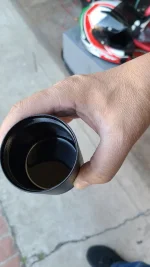ajwklajdskla1
Member
- Joined
- Dec 30, 2019
- Messages
- 40
- Reaction score
- 13
- Points
- 8
- Location
- Georgia
- Genesis Model Year
- 2019
- Genesis Model Type
- Genesis G70
Each filter cost about 65$ and overview states "K&N® washable, reusable High-Flow Air Filters™ feature a state-of-the-art design of layered, oiled cotton media engineered to improve airflow and capture contaminants, and are designed to provide an increase in horsepower. Each performance air filter is reusable, engineered to last for the entire lifespan of your vehicle, and backed by K&N's 10-Year/Million Mile Limited Warranty. K&N drop-in replacement filters are designed to install easily into your factory air box. Upgrade today and start enjoying superior airflow and superior performance from K&N's most popular product".
I am interested in getting those and wondering if anyone here already have them on?
If I were to install those on my car, I would clean every 10,000 miles or so but I wanted to see what others say about those filters before I get these.











